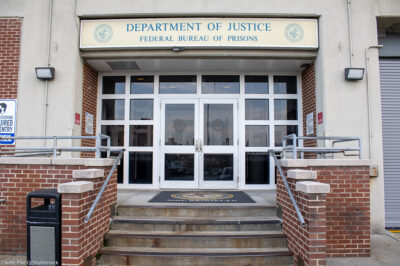Supreme Court Says Cops and Courts Must Consider Child’s Age in Miranda Warnings
Yesterday the Supreme Court rejected North Carolina’s effort to deprive a 13-year-old student his Miranda rights. In a 5-4 decision, the Supreme Court ruled in J.D.B. v. North Carolina that police and courts must consider a child’s age when determining whether that child should be read Miranda rights. The ACLU filed an amicus brief in the case.
A quick primer on Miranda: Criminal suspects are entitled to Miranda warnings ― the ones we all learned from Law & Order ― when they are being interrogated in custody. And a suspect is in custody when a reasonable person would think he or she is not free to end the questioning and leave.
J.D.B., a seventh grader, was removed from his classroom by uniformed police and taken to a closed-door conference room where police and school administrators questioned him for 30 minutes about burglaries in the neighborhood. They did not give him Miranda warnings or the opportunity to call his grandmother, nor did they tell him he was free to leave the room, until after he’d confessed. Instead they threatened him with jail and recorded his confession. When his public defender later tried to get the confession thrown out because J.D.B. wasn’t given a Miranda warning, the North Carolina Supreme Court held that the child was never actually in custody, and that his youth was not relevant to his reasonable belief otherwise.
The U.S. Supreme Court was asked to decide whether age was in fact something to consider when deciding if a person was in custody. To the ACLU and five Supreme Court Justices, the answer was painfully obvious – yes, of course.
As the Court explained, “[i]t is beyond dispute that children will often feel bound to submit to police questioning when an adult in the same circumstances would feel free to leave,” and there is no reason for “police officers or courts to blind themselves to that commonsense reality.” The Court supported its decision by citing Roper v. Simmons (which ended the death penalty for crimes committed by juveniles) and Graham v. Florida (which ended life without parole for non-homicide juvenile offenders).
We should celebrate this important victory. However, our amicus brief, which got a favorable mention here, made a second important commonsense point that we ought to consider: the often coercive school environment should also be a factor weighed by cops and courts in giving Miranda rights. At school, students are not free to disobey orders nor are they free to leave without consequence. And the stakes are high: common misbehavior that once merited a trip to the principal’s office is now routinely referred to outside law enforcement.
What’s more, police are increasingly present as a permanent fixture in schools nationwide. New York City, for example, has over 5000 police officers placed inside its schools. The NYPD School Safety Division constitutes the fifth largest police force in the country, with more officers than the police departments in Washington D.C., Detroit, Baltimore, Dallas, Boston or Las Vegas.
The result of all these cops in schools? Arrest for harmless, noncriminal behavior. You might get be arrested for texting, or dropping a piece of birthday cake, and if you are a four-year old who refuses to nap, you’ll be facing handcuffs at the very least. If you push a hall monitor, well that’s “assault on a public servant” and you might just get a seven- year prison sentence. Schools have become a distressingly common pipeline to jail.
Students of color are at a greater risk of arrest at school than their white peers. For example, a review of school police practices in West Hartford, Connecticut, revealed that black and Latino students account for 24 percent of the town’s student body, but make up 63 percent of school-based arrests. It’s clearly more than outliers and anecdotes: ACLU reports document systemic issues resulting in the criminalization of public schools in NYC. And arrest rates track the large racial disparity in school discipline and ‘zero tolerance’ policies: the NYCLU recently published a study focusing on suspension as a means to deny access to education to youth of color.
The Supreme Court took a step in the right direction yesterday by recognizing that age must be a factor in determining whether students are entitled to basic constitutional protections. But when 6-year-olds are being arrested for temper tantrums, we need to ask some important questions about the role of police in schools. Until we address those questions, the destructive effects of the school-to-prison-pipeline will continue to be felt by all students and particularly children of color.
Learn more about the school-to-prison pipeline: Sign up for breaking news alerts, follow us on Twitter, and like us on Facebook.


